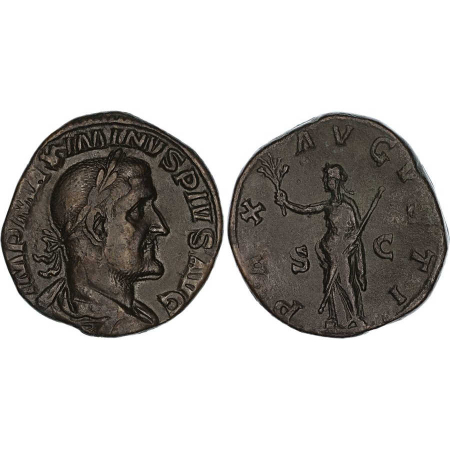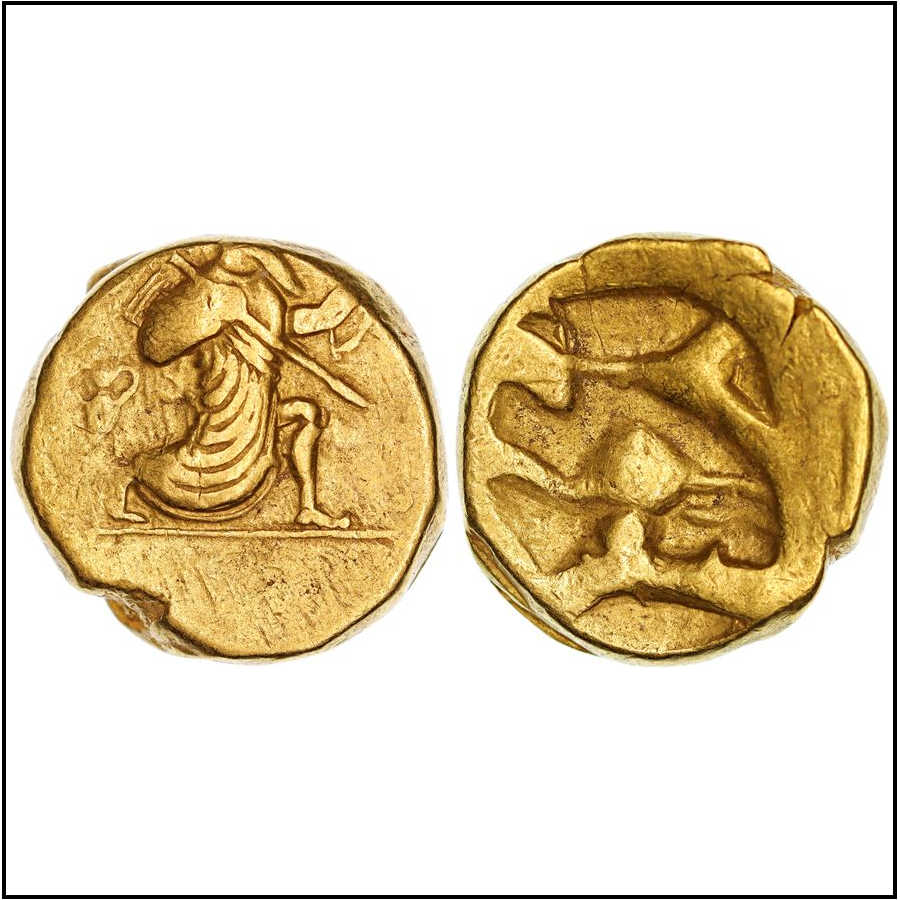Description
Æthelstan of the House of Wessex, as King of the English 927-939 AD, Silver Penny (1.54g, 21mm), Crowned bust type, Norwich mint 933-938 AD, under the authority of the moneyer Barbe. Obverse: Crowned and draped bust of King Æthelstan facing to the right, inner lined border and legend with initial mark ‘cross pattée’ surrounds, “ÆÐELZTΛN REX”. Reverse: Small cross pattée central, inner lined border and legend with initial mark ‘cross pattée’ surrounds, “BΛRBE MO NORÐPIC”. North-675; S-1095. A most captivating Æthelstan portrait piece, offering a complete and bold portrait struck on a flan unclipped of its excess metal, quite interesting as a result, some very minor hairlines, a masterful piece of Anglo-Saxon history, details near Extremely Fine and scarce.
The obverse legend reads “Æþelstān rēx”, naming the King and his title as ‘Rēx’ (‘King’). The reverse legend reads unabridged as “Barbe monētae Norþwīċ”, with an English translation of “Barbe of the Mint of Norwich”. Norwich is written as the old English word derived from “norþ” (“north”) + “wīċ” (“hamlet”).
Æthelstan of the House of Wessex became King of the Anglo-Saxons in 924 AD and was the son of Edward ‘the Elder’ and the grandson of Alfred ‘the Great’, and is widely considered one of the greatest kings of the Anglo-Saxon period. This accolade is attributed much to his unification of the whole of England under the rule of a single Anglo-Saxon King. With the submissions of the other minor British kings and the defeat of the Vikings to the North in York in 927 AD, Æthelstan became the first King of the English – he issued a new coinage, the “circumscription cross” type pennies, which was inscribed with his newly exalted status on the obverse, “Rēx tōtī̆us Britanniae” – “King of all of Britain”.
![Æthelstan, 'Portrait' Penny, Norwich mint, Barbe [ECA-23a] - Image 2](https://colonialcoins.com.au/wp-content/uploads/2025/05/ECA-23a-2.jpg)





